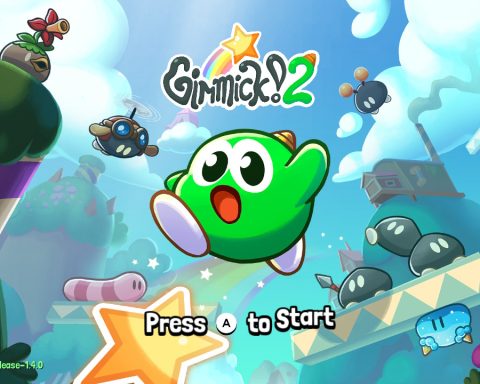Review by Lindsay M.
The Infectious Madness of Doctor Dekker is one of those titles that immediately jumped out at me for several reasons. First, FMV games are my everything. Second, Doctor Dekker essentially allows me to become a psychiatrist, interacting with patients and shaping their lives. Third, I have always been intimidated by Lovecraft and works inspired by him, and at the age of 32 it’s about damn time I stop being afraid — or perhaps start being afraid?
The game experience begins on your first day on the job as a psychiatrist. Anyone can seamlessly integrate themselves with the game, as characters will look at and speak directly to you, not a named character with a backstory. It creates a rather intimate experience which, for me at least, led to a legitimate want (or need?) to help my patients. My patients who used to be Doctor Dekker’s patients.
My patients who are all suspects in the murder of Doctor Dekker.
It’s an interesting thing, replacing Doctor Dekker. I’m sure psychiatrists see their fair share of people with unbelievable tales, but it seems like an awful lot of my patients like to spin these tall tales. Most of the patients do seem entirely normal at first, others downright batty. But then the normal ones start to say crazy things too… One claims to blackout at random and wake up on the beach, naked, every time. Another claims he has more time in the day than everyone else. Yet another can enter the dreams of others.
I think it’s really important to pause here a moment to discuss something. Too many ask Doctor Google to diagnose a mental illness relating to themselves or others. At first I was concerned that’s partially what was happening in the game, as I start to ask patients what their diagnosis is, but at no point do I ever feel like I’m actually diagnosing someone’s problems. I never have to, say, diagnose Patient X with Borderline Personality Disorder or Patient Y with paranoid delusions. It is a fine line to tread, but the devs have done so successfully.
But back to my patients. One has a tale of a fossil found at the graveyard where he works, a fossil that reminds me very much of the bas-relief found in Lovecraft’s Call of Cthulhu, which of course I had to read while reviewing The Infectious Madness of Doctor Dekker. And I’m concerned that there have been tales of a Medusa-like character being seen in silhouette. And then there’s Marianna, the pouty, flirty girl that continuously wakes up confused and nude on the beach. Her necklace is as mesmerizing as her smile, but not enough for the tie between the ocean and Cthulhu to be ignored.
Are the patients believable? In the beginning, some seem mad, most seem sane. But as I dig through the information each patient as, I realise that the mad ones be more sane than anyone could ever realize…
The way The Infectious Madness of Doctor Dekker builds upon fear and madness is almost entirely psychological with only hints of the physical world being affected. What’s so scary about a psychiatrist? Nothing, until you learn the one they are replacing was viscously murdered. What’s so scary about a bunch of patients? Nothing, until their stories begin to intertwine. What’s so scary about a receptionist? Well, she’s obsessed with this book… My point is, everything that seems odd at first actually becomes mundane, but the mundane becomes terrifying.
So how, exactly, does the game relate back to Lovecraft and Cthulhu? I’m a Lovecraft virgin, remember, but I was sure to read the original Call of Cthulhu story. The Infectious Madness of Doctor Dekker uses the insanity of the patients — and a certain common trait of theirs — as a veil for Cthulhu’s story in such a clever way that I can’t help but think someone who didn’t know of the story would only be missing minimal amounts of entertainment value. But boy, does the proper background ever make finding the little details more fun! For clarification, I played about 50% of the game to completion prior to starting Call of Cthulhu and I read it off and on while playing through the rest.
Anyone who does know the lore of Cthulhu may have perked at the mention of a woman awakening on the beach, and with good reason. The gist of the story is that below the water’s surface lives a city of odd geometry — R’lyeh — and even odder residents, several ancient Gods waiting to return to Earth’s surface when Cthulhu rises once again. These Gods are neither alive nor dead, but kept in limbo by the mighty Cthulhu instead. Once the people or Earth have moved past law, Cthulhu will rise to power and bring the Ancient Ones with him.
There are bits of Cthulhu everywhere, including on Marianna’s person, although I doubt she’s aware enough to make the link. There are then more obvious references, such as a crazy old professor who believes the lore to be true.
Speaking to the patients becomes like a very strange, long-winded game of Clue: who killed Doctor Dekker with the paper spike in his office? Most of the blanks are filled except for the whodunnit, and Doctor Dekker has patients with backgrounds that may suggest a certain predisposition to anger or violence. As the days pass, you’ll collect evidence about the murder. The first is a recording of Doctor Dekker’s session with a Professor Alderby, where at midnight gravity apparently briefly ceases to exist. You are then able to ask your patients about the evidence as well as their own life experiences. The evidence becomes a strange collection of tidbits that look like it should scroll but doesn’t, but is a useful collection regardless. Thankfully, your receptionist is very useful at getting police reports and the late Doctor Dekker’s video files.
Until this point, there’s a noticeable lack of gameplay talk here. The reason is simple: different difficulty options make for very different gameplay experiences, a fact that I cannot praise enough. The gameplay was something I was legitimately concerned about, for if I had to type out hundreds of questions via the controller or my phone I likely would have thrown something at a wall and then sworn for the entirety of a 1,000-word review. It would have been a creative masterpiece, certainly, but then where would those seeking an actual review be left?
The easiest mode (“Easy”) offers frequent hints, a notebook of things to ponder, and pre-written questions so asking something is two clicks away rather than an entire sentence worth of clicks. This is where I spent the majority of my time, as writing out entire sentences to ask each person dozens of times per day seems like a little much for me. Of course, there’s the in-between where you can just bring up keywords, but I’m a perfectionist so that won’t do. In this mode, it’s not so important to recall events and conversations from one day to the next, or even one patient to the next. If something relevant can be asked, the question is there for the clicking. I can look back on the entire day’s worth of questions with each patient. This combination means that for people who struggle with either pain or cognitive issues, it becomes incredibly simple to follow the story without getting stuck in some sort of weird word-loop.
The hardest (“Insane”) offers no pre-written questions and no hints. You’re on your own thinking up the right way to ask someone about their dead employer or their skinny dipping trips. This mode practically requires a real-life notebook — and I only say “practically” because a digital one would do just fine, but you better be writing down everything that is said. Of course, there are four modes in between — Casual, Normal, Hard, and Hardboiled —each offering a different combination of hint options and times. The six modes can be interchanged within the same save file, so if you start at Insane and find it insane you can switch it to an easier setting.
This leads me to a frustration, one of the few I have with The Infectious Madness of Doctor Dekker, and that is that you are only able to access the options from the main menu, not from the game’s pause menu. It seems needless to back out so far, especially to turn on subtitles. Another qualm is actually something I consider an accessibility issue, and that I’d love for the devs to fix in a patch: there are no subtitle size options. They’re on by default — yay! — but remain quite small. Considering there are six difficulty settings, a few more options for the subtitles doesn’t seem like an unreasonable request.
As I said, because I am a rather forgetful human at the best of times, I spent most of my time in Easy, so it’s that difficulty setting that I am the most comfortable with critiquing. And some of it is kind of… out of order. The game will give you hints/notes, such as “Did Dekker call Nathan the day he was murdered? I should ask him.” But then when I ask him it flashes back to a statement he made earlier in the day, so clearly I didn’t need to ask him again. Similarly, at times notes will come up after they are relevant; I told a patient Doctor Dekker was stabbed, and it is afterwards that a note pops up stating I should tell her just that. And sometimes, if you jump between lines of questioning with the same patient, you’ll get some information out of order. For example, Bryce talks about taking a second photo when he hasn’t mentioned a first, let alone explained the camera around his neck.
Next to a patient’s name are three little circles: green, yellow, and red. Some patients start off with red, others yellow. Down in the depths of the easiest mode, I have no idea what their purpose is, but I do notice that when I go from red to yellow with someone, more questions open up, so I assume it’s some sort of trust meter. I don’t think I ever got to green.
And now I’m left somewhat confused by what to do regarding my score of The Infectious Madness of Doctor Dekker. The concept, the narrative, the characters, the Lovecraft references… these are all brilliant parts to the game. But then when you really break apart the gameplay (at least on the difficulty I was at) and game options, the shortcomings become apparent.
Actually, being able to write out that thought has made my decision clear. Accessibility issues are never something to take lightly, but I can absolutely live with the apparent amazing time-traveling hints because it means I am left with the experience of the game. I’m not left with specific annoyances, instead with an ever-increasing curiosity at the game itself, Lovecraft, psychiatry, the FMV genre, etc.
The Infectious Madness of Doctor Dekker’s hook, for me, remains the need to take over as a psychiatrist. It’s not as easy as sitting comfortably and saying things like, “and how does that make you feel?” As Doctor Dekker’s replacement you are toeing the line between your patients’ sanity and insanity, having to decipher clues in their personality or stories to gain insight into what to ask. The supernatural, Cthulhu-centric story behind the game is also a shining point that has led me to finally break my hesitancy to read Lovecraft. Your own sanity comes into question.
But then again, as my receptionist Jaya states in the game:


– Lindsay M.
News Editor










